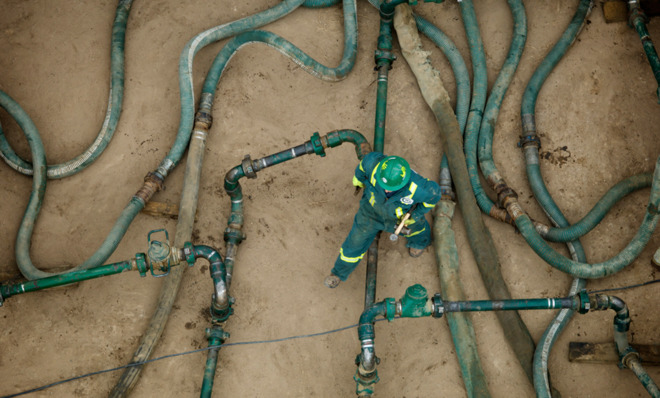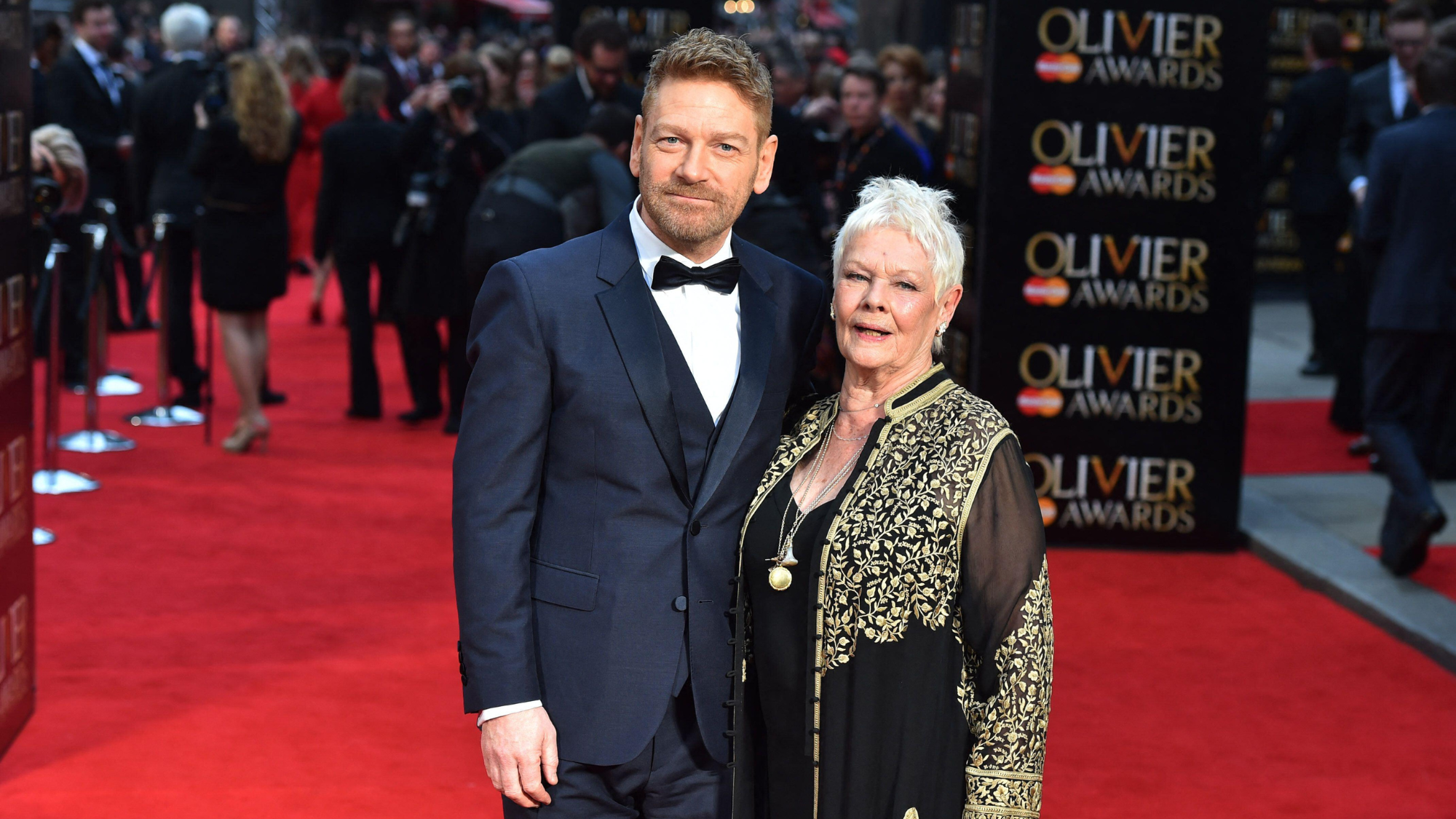Everything you need to know about fracking
The practice, officially called "hydraulic fracturing," is controversial for many reasons. But how does it work?


Recently in New York City, protesters took to the boardwalk in the Rockaways to voice opposition to the Rockaway Lateral Project, which aims to install a pipeline under New York City's Jacob Riis and Fort Tilden beaches to connect two existing natural gas distribution systems. The pipeline, controlled by Williams Partners L.P., will allow fracked natural gas from the Marcellus Shale, in Pennsylvania, to flow to a new meter and regulator station at Floyd Bennett Field, in Brooklyn, and then into the current distribution lines running up Flatbush Avenue. The evidence for environmental damages caused by unregulated fracking procedures is mounting at the same time that the U.S. is striving to decrease its dependency on oil and coal. Is fracking the lesser of two evils? Or could it be?
Though the process has been around for about 60 years, hydraulic fracturing has recently become an industry darling for two main reasons. First, fracking can extract oil and natural gas from rock formations that would ordinarily be inaccessible. Second, when combined with horizontal drilling, it can extract more oil and gas from a single drill pad than was previously possible. Nowadays we're living in a kind of "fracking renaissance"; approximately 27,000 new fracking wells were drilled in the U.S. in 2011 alone. But what actually happens in hydraulic fracturing?
The rocks
The Week
Escape your echo chamber. Get the facts behind the news, plus analysis from multiple perspectives.

Sign up for The Week's Free Newsletters
From our morning news briefing to a weekly Good News Newsletter, get the best of The Week delivered directly to your inbox.
From our morning news briefing to a weekly Good News Newsletter, get the best of The Week delivered directly to your inbox.

Oil and natural gas reside in sandstone and shale rock formations deep below the surface of the earth. Billions of years ago, as these rocks were forming through sedimentation, organisms such as plankton and algae would get trapped along with the minerals. These microorganisms' bodies formed pockets of organic, carbon-based matter. As the rock aged and pushed deeper into the earth, heat and pressure slowly turned these organisms into hydrocarbons, creating, among other things like oil, natural gas (or methane). When newly made, the methane migrates back up toward the surface from its source rock into reservoir rock, typically sandstone or shale, where it gets trapped.
(More from World Science Festival: Inside the mystery serum that could save Ebola victims)
Sandstone, which is often drilled for conventional oil, is quite porous and holds oil the way a sponge holds water. When drilled, the sandstone is porous enough that the pressure difference between the wellbore and the rock (again, the oil wants to move up but is trapped) and the large gaps between the grains in the rock allow the oil to flow out of the rock and up to the surface. Shale, in contrast, is more tightly packed and can't be tapped in the same way. Instead, it needs to be fracked.
The drilling
A free daily email with the biggest news stories of the day – and the best features from TheWeek.com

Once a shale formation is targeted, an energy company will set up a drill pad, or home base, for drilling. The first step is to drill (with a drill bit typically 18-20 inches in diameter) vertically down past younger layers of rock that may surround a water table or contain younger types of gas. Once the hole is about 1,000 feet deep, a steel casing that's thinner than the hole itself is inserted. Next, cement is pumped down the casing, followed by high pressure air, which pushes the cement to the bottom of the drill hole and up into the gap, or strings, between the steel casing and the surrounding rock. This becomes the vertical wellbore. The process is repeated until the drill hole is deep enough to reach the shale, which could be as deep as 10,000 feet below the surface, but typically caps out around 7,000-8,000 feet.
The invention of horizontal drill bits allows the wellbore to change direction once it is at a target depth. From a single drill pad, then, energy companies are able to drill multiple vertical wellbores within five feet of each other that are able to reach a very wide radius, sometimes miles wide, from the drill pad, thus eliminating the need to set up multiple drill pads across a landscape.
The next step is to send small explosives or a perforation gun down to the targeted section of the horizontal wellbore to punch holes through the steel casing and cement. Once the holes are made, between 3 million and 5 million gallons of water containing a mix of sand and chemicals is pumped at an extremely high pressure down into the wellbore. This fracking fluid explodes out of the holes, pulverizing the shale rock and creating multiple fractures or fissures throughout the formation. (FracFocus, a nonprofit website, keeps lists of chemicals used in fracking across the country, but disclosure is not legally required and companies listed submit their fracking solution "ingredients" voluntarily). The sand and chemicals of the fracking fluid sneak into the cracks created in the rock and hold them open, allowing for the trapped natural gas to flow back into the horizontal wellbore. The rock can be held open by just a few tiny grains of sand.
(More from World Science Festival: Is this bomb big enough?)
Because the gas is lighter than fracking solution, it rises to the top and is funneled into pipelines that take it either to a gas treatment plant, a separating facility, or storage. Roughly 10 to 30 percent of the fracking fluid (now called flowback) travels back up through the well. Ideally it is recycled in the next job, as the chemicals and sand in the solution render it useless for much else. If not recycled, flowback is disposed into a deposit well deep in the earth. The water that remains in the well is absorbed into fractured rock.
The risks

Fracking has the potential to provide a cheaper, cleaner energy alternative to coal and oil, as well as to drive huge profit for energy companies. But the risks are large: Methane is a much more devastating greenhouse gas than carbon dioxide, so leaks could undercut efforts to roll back carbon emissions. Fracking fluid contamination of water resources is already occurring, and its effects on the environment and public health are still largely unknown. Ongoing research is also investigating potential connections between fracking and earthquakes.
(More from World Science Festival: Do predictive algorithms allow for free will?)
Balancing the known benefits of reducing our dependence on oil with the largely unknown costs and risks of fracking is a delicate path to tread. Fred Krupp, president of the Environmental Defense Fund, called for "ambitious pragmatism" on fracking in an interview with Foreign Affairs magazine: "We live in the real world and things like fracking and the exploitation of America's natural gas resource are going to happen. So let's maximize the benefit we get from converting a coal-powered power plant to natural gas as we put pedal to the metal on speeding the introduction of wind power and solar power."
-
 The history of US nuclear weapons on UK soil
The history of US nuclear weapons on UK soilThe Explainer Arrangement has led to protests and dangerous mishaps
-
 Tea with Judi Dench: ‘touching’ show is must-watch Christmas TV
Tea with Judi Dench: ‘touching’ show is must-watch Christmas TVThe Week Recommends The national treasure sits down with Kenneth Branagh at her country home for a heartwarming ‘natter’
-
 Codeword: December 24, 2025
Codeword: December 24, 2025The daily codeword puzzle from The Week